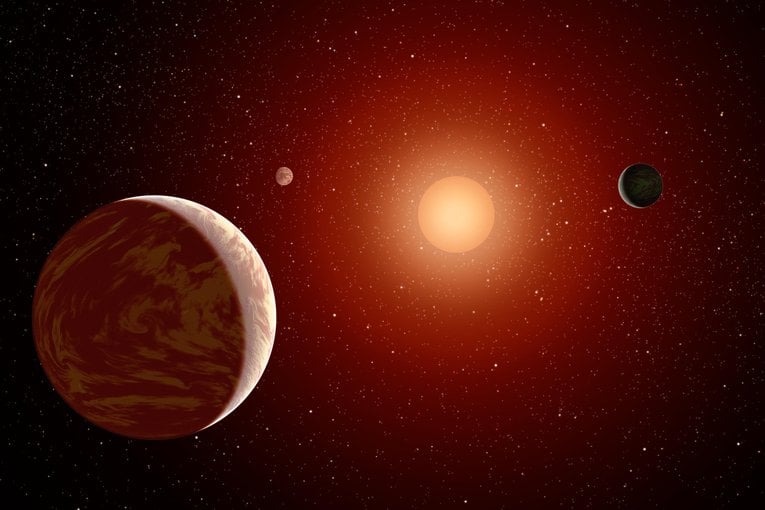A recent study submitted to the American Astronomical Society journals investigates the potential for exo-Titans—exoplanets with atmospheres rich in nitrogen and methane, similar to Saturn’s moon Titan—to orbit M-dwarf stars. These stars are smaller and cooler than the Sun, and the research aims to deepen understanding of planetary formation and evolution in these environments.
Using advanced computer models known as Photocem, researchers simulated photochemistry on exo-Titans, focusing on the lifetimes of atmospheric methane. The models also examined other gases, including hydrogen, nitrogen, oxygen, and carbon. The study utilized the well-known exoplanet TRAPPIST-1e as an analog for an exo-Titan, given its orbit around an M-dwarf star and its location within the star’s habitable zone.
The findings revealed that methane on TRAPPIST-1e would have notably short lifetimes, leading to an estimated 1 to 10 percent chance for astronomers to detect a warm exo-Titan. The researchers noted, “This finding is consistent with recent JWST nondetections of CH4-dominated atmospheres on warm terrestrial exoplanets. The low prior probability means that the standard of proof required to claim a warm exo-Titan detection is high.”
Implications for Astrobiology
TRAPPIST-1e, which completes an orbit in just 6.1 days—compared to Mercury’s 88 days—presents an exciting target for astrobiology. Positioned squarely in the middle of its star’s habitable zone, it could offer insights into the potential for life beyond Earth. M-dwarf stars are particularly intriguing due to their extended lifetimes, which can reach trillions of years, allowing more time for planetary development.
In choosing Titan as an analog, researchers highlighted its unique biosignatures. Titan’s atmosphere, dominated by methane, has led to its status as a prime target for astrobiology, with past studies suggesting it might replicate conditions present on ancient Earth. While Titan orbits outside our Sun’s habitable zone, the potential existence of an exo-Titan within an M-dwarf star’s habitable zone could provide a critical opportunity for life detection.
Yet, the study cautions that if the low probability of discovering a warm exo-Titan proves accurate, the chances of finding life in such environments may diminish.
Future Exploration and Discoveries
The exploration of exoplanets has surged, with the number of confirmed exoplanets reaching 6,000. NASA is poised to enhance this field of study further with plans to launch the Dragonfly quadcopter mission to Titan in July 2028, aiming for arrival in 2034. This mission could significantly contribute to our understanding of Titan-like worlds and their potential for habitability.
As researchers continue to investigate exo-Titans and the atmospheric compositions that may support life, the scientific community eagerly anticipates breakthroughs. The findings from this study underscore the complexity of the universe and the ongoing quest to understand the possibilities of life beyond Earth.





































































